- Market volatility spikes
- Investors eyeing US Fed and Ukraine
- Oil recovers
- EIA crude oil inventories are released on Wednesday.
- On Thursday US initial jobless claims are published..
- US GDP figures are printed on Thursday.
- The FTSE 100 increased 1.0%
- The STOXX 600 rose 0.5%
- Futures on the S&P 500 fell 1.4%
- Futures on the NASDAQ 100 fell 1.9%
- Futures on the Dow Jones Industrial Average fell 0.8%
- The MSCI Asia Pacific Index fell 1.5%
- The MSCI Emerging Markets Index fell 1.1%
- The British pound was down 0.3% at $1.3441
- The Dollar Index rose 0.1%
- The euro fell 0.3% to $1.1268
- The Japanese yen was little changed at 114.00 per dollar
- The offshore yuan was little changed at 6.3375 per dollar
- Britain's 10-year yield rose two basis points to 1.15%
- The yield on 10-year Treasuries declined two basis points to 1.75%
- Germany's 10-year yield advanced one basis point to -0.09%
- WTI jumped 1.4% to $84.47 a barrel
- Brent crude rose 0.2% to $85.59 a barrel
- Spot gold was down 0.26% to $1,838.19
Key Events
Dow Jones, S&P 500, NASDAQ and Russell 2000 futures were all deeply in the red on Tuesday as markets were rattled by geopolitical tensions as well as tomorrow's Federal Reserve interest rate decision.
The dollar recovered along with Treasury yields.
Global Financial Affairs
Traders were on high alert because of news that NATO is sending reinforcements to eastern Europe and the US has put its own troops on standby in the event that Russia invades Ukraine.
Investors are also expecting money to become more expensive as the Fed is anticipated to start tightening policy imminently.
The VIX, also known as the 'fear gauge,' closed yesterday at the highest level since Jan. 27, 2021, after briefly touching Oct. 28, 2020 levels intraday.
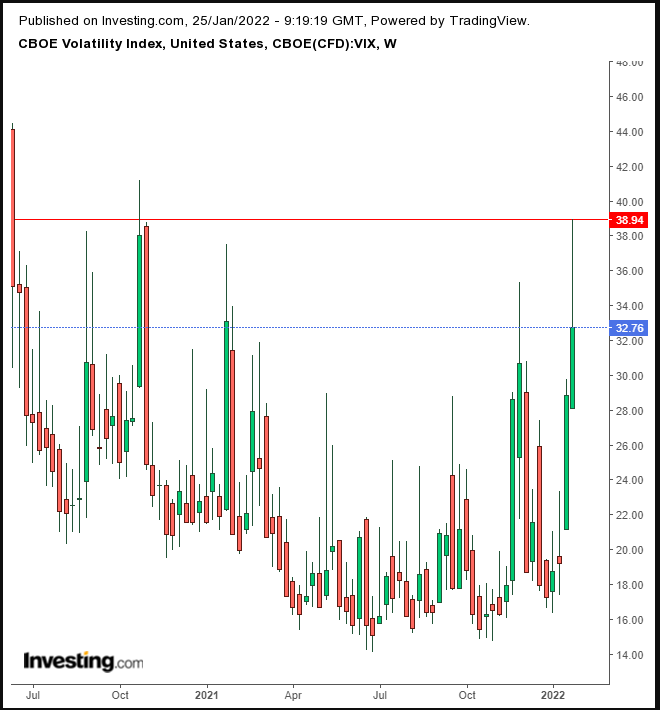
In Europe, the STOXX 600 found its footing after its worst plunge since June 2020. Strong earnings for telecom equipment manufacturer Ericsson (BS:ERICAs) and luxury watchmaker Swatch Group (SIX:UHR) helped the pan-European gauge rebound.
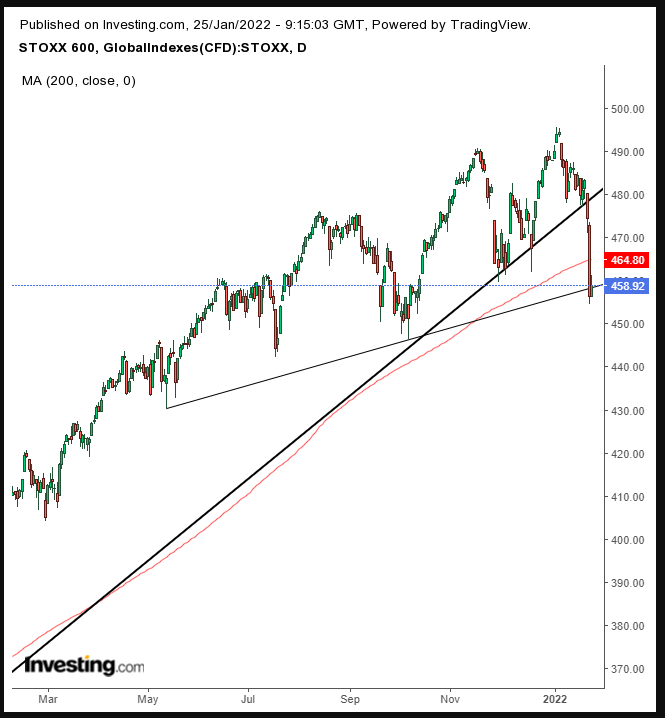
After the European benchmark fell through its uptrend since the March 2020 bottom, it is now struggling with remaining above a flatter uptrend line since May 13. Since closing below the 200 DMA yesterday, for the first time since crossing over it on November 2020, the odds increase for a continued selloff.
Earlier Asia saw deep losses, with the worst action in South Korea where the KOSPI lost 2.56% of its value, falling to its lowest since Dec. 8, 2020. Samsung (KS:005930) sold off 1.5%, battery manufacturer LG Chemicals (KS:051910) dropped 4.2%, and Samsung SDI (KS:006400) plummeted 5.9%.
The steep selloffs came even after earlier, positive data from the Bank of Korea showed that Asia's fourth-largest economy grew at the fastest clip in 11 years, thanks to a surge in exports and construction activity.
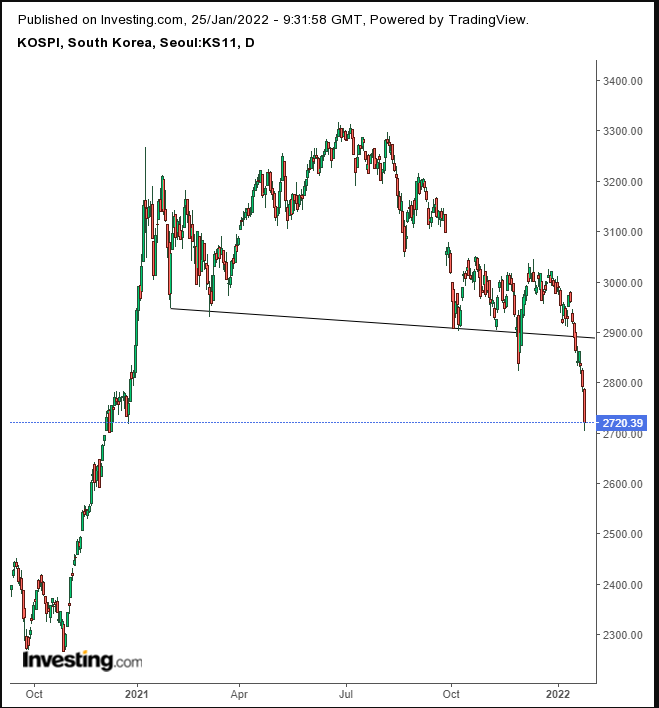
The benchmark extended the downside breakout of an H&S top.
Monday's US trading was a heart-stopper. The first half of the session saw the worst selloff since the start of the coronavirus pandemic. Then dip-buying erased significant losses for the S&P 500 (-4.4%), Dow Jones (-3.24%) and NASDAQ 100 (-4.91%) which ended the day, 0.28%, 0.29% and 0.63% higher respectively.
The Russell 2000 fell 2.85% in the early part of Monday's session but closed 2.12% higher. So it seems both sides of the reflation trade outperformed with the clear advantage to cyclicals.
It appears the outlook for higher rates has shifted from dangerous to no big deal for stocks. BlackRock Investment Institute said that higher interest rates pose a minor threat to equities and that opportunities remain even if Treasury yields continue rising.
Yields on the 10-year Treasury note are up for the third day in a congested range.
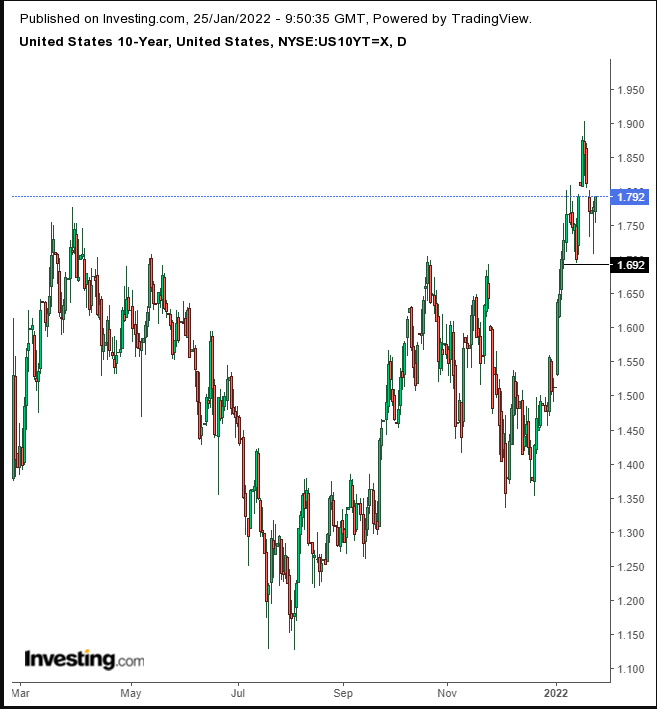
Rates have struggled to let go of the March peak and maybe form a small H&S top.
The dollar rose for the second day, tracking yields.
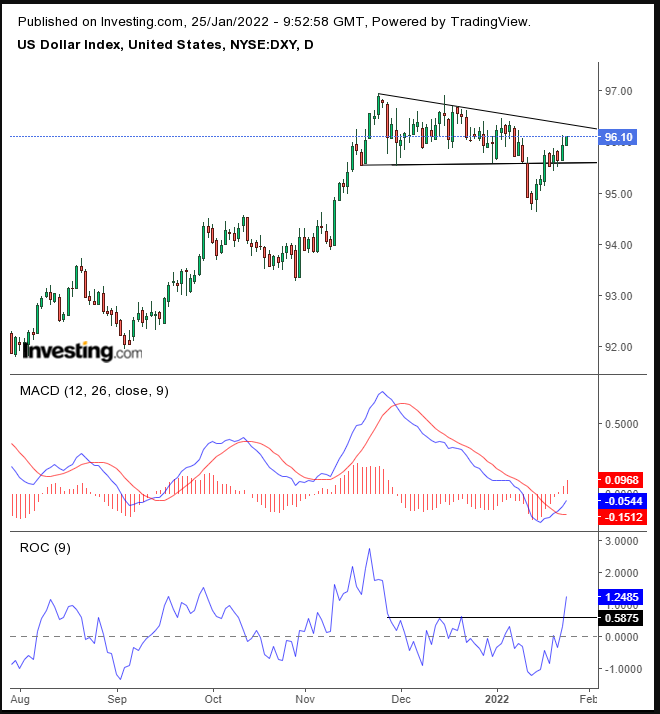
The greenback climbed back into a Descending Triangle as bulls attempted to blow out the bearish pattern. The MACD and ROC both provided bullish signals.
Gold retreated from yesterday's advance as it continued to range.
Bitcoin was little changed. There has been no obvious trend for the last four days.
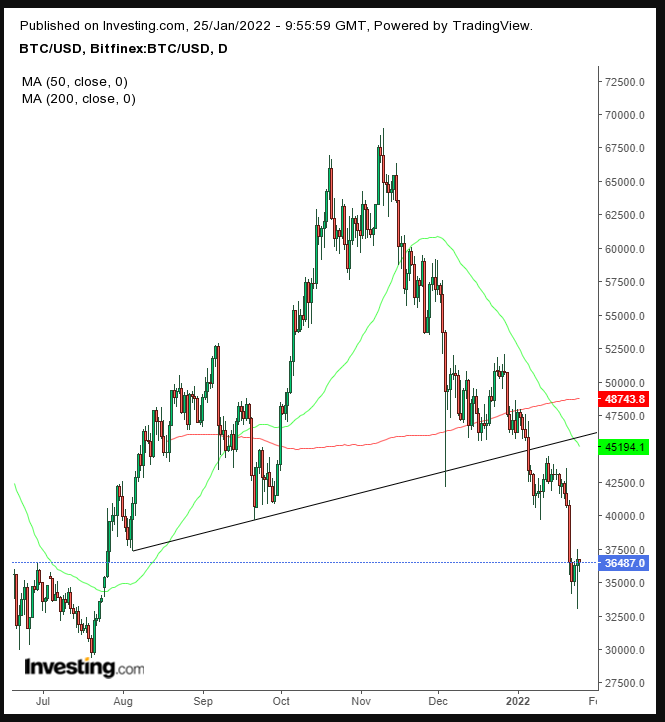
Recently, the cryptocurrency triggered a Death Cross after the 50 DMA crossed below the 200 DMA, one of technical analysis's most notorious bearish signals, right after Bitcoin completed a sizeable H&S top, which could mean considerable further trouble for the crypto.
Oil found its footing after a volatile period amid disruptions to global supply as well as its demand outlook being caught in the crosshairs of the broader market risk-off sentiment.
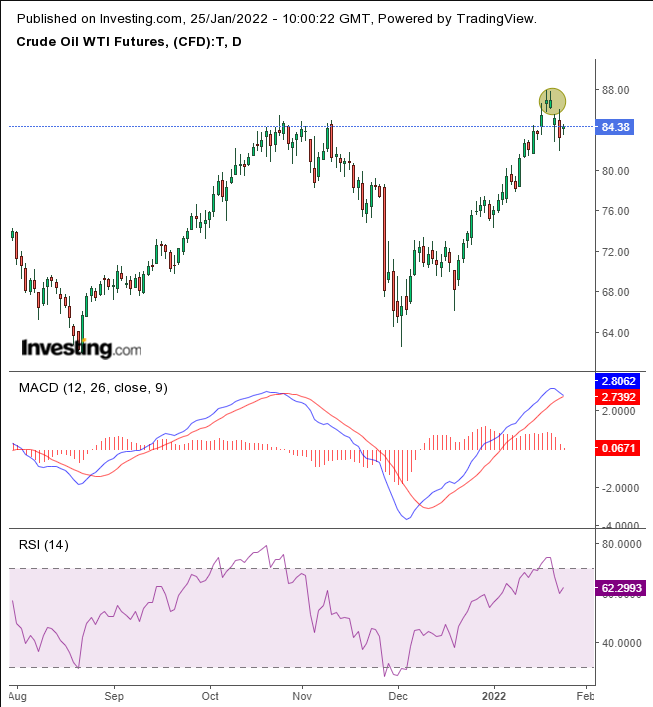
The price was struggling with direction at the resistance of the October-November peak after WTI formed an Island Reversal when the price first gapped up, but then gave up the advance with an equally dramatic gap down. The RSI was curving down from overbought conditions and the MACD looked about to trigger a bearish cross.
